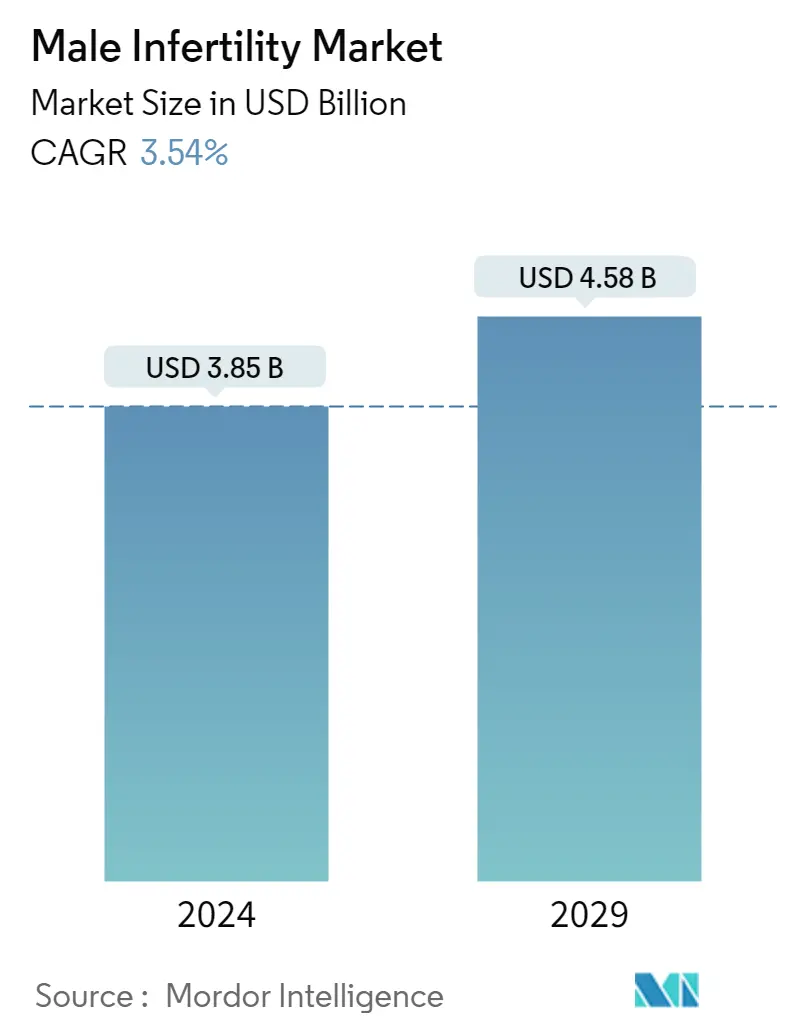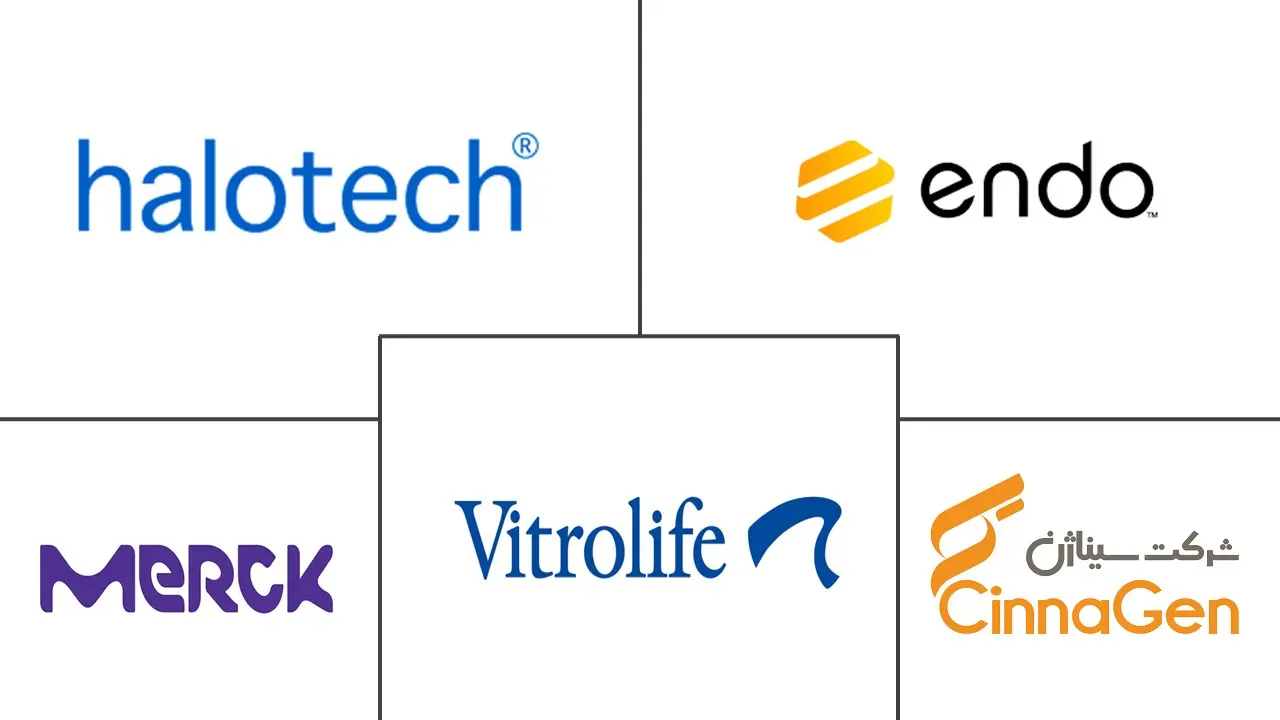Market Size of Male Infertility Industry

| Study Period | 2021 - 2029 |
| Market Size (2024) | USD 3.85 Billion |
| Market Size (2029) | USD 4.58 Billion |
| CAGR (2024 - 2029) | 3.54 % |
| Fastest Growing Market | Asia Pacific |
| Largest Market | North America |
Major Players
*Disclaimer: Major Players sorted in no particular order |
Need a report that reflects how COVID-19 has impacted this market and its growth?
Male Infertility Market Analysis
The Male Infertility Market size is estimated at USD 3.85 billion in 2024, and is expected to reach USD 4.58 billion by 2029, growing at a CAGR of 3.54% during the forecast period (2024-2029).
Covid-19 has significantly impacted market growth during the pandemic due to the effect of disease on sperm concentration and motility. This might have led to increased adoption of infertility testing during the pandemic to diagnose the address infertility issues. For instance, according to the study published in 'Medicine Journal' in July 2022, following a COVID-19 infection, male fertility may be affected for 72 to 90 days as a result of a considerable decline in sperm concentration and motility. There is strong proof that fever can impact spermatogenesis. Such instances might have positively impacted the market growth during the pandemic due to reduced spermatogenesis and the decline in the motility of sperm. Furthermore, post-pandemic, the market is expected to show significant growth due to a rise in male infertility and technological advancements in infertility testing, among others.
The growth of the male infertility market is attributed to the increasing incidence of infertility, high adoption of assisted reproductive technology (ART), and technological advancement in ART, among others. Moreover, rising stress levels, obesity, smoking, and consumption of alcohol is also some of the factors that are contributing to infertility in male. Furthermore, growing awareness, increasing R&D expenditure, and changing lifestyles are also fueling the male infertility market. According to the study published in the Asian Pacific Journal of Reproduction in October 2021, around 9% of couples worldwide experience reproductive issues, of which nearly 50% are caused by male factor infertility. Furthermore, according to the Newcastle University press release in January 2022, it is estimated that up to 7% of men are affected by infertility in the United Kingdom. Therefore the high prevalence of infertility is therefore expected to drive market growth due to the rise in the adoption of male fertility techniques.
Furthermore, rising technological advancements such as assisted reproductive technology have driven market growth further. Assisted reproductive technology is a medical procedure used to treat infertility that offers a quick fix to the male facing problems in infertility due to abnormal sperm quality, low sperm count, and poor motility. This procedure is being widely adopted due to its benefits, like a higher success rate compared to medications. For instance, according to the study published in the Journal of Urology in January 2021, addressing male infertility with specialized treatments and assisted reproductive methods is beneficial. Such studies show the importance of assisted reproductive methods in infertility testing, thereby leading to rising adoption and propelling the market growth.
Thus, the increasing population with infertility coupled with technological advancements in the field of assisted reproductive technologies results in promoting the revenue growth of the male infertility market.
However, the high cost of male infertility treatments is expected to impede market growth over the forecast period.
